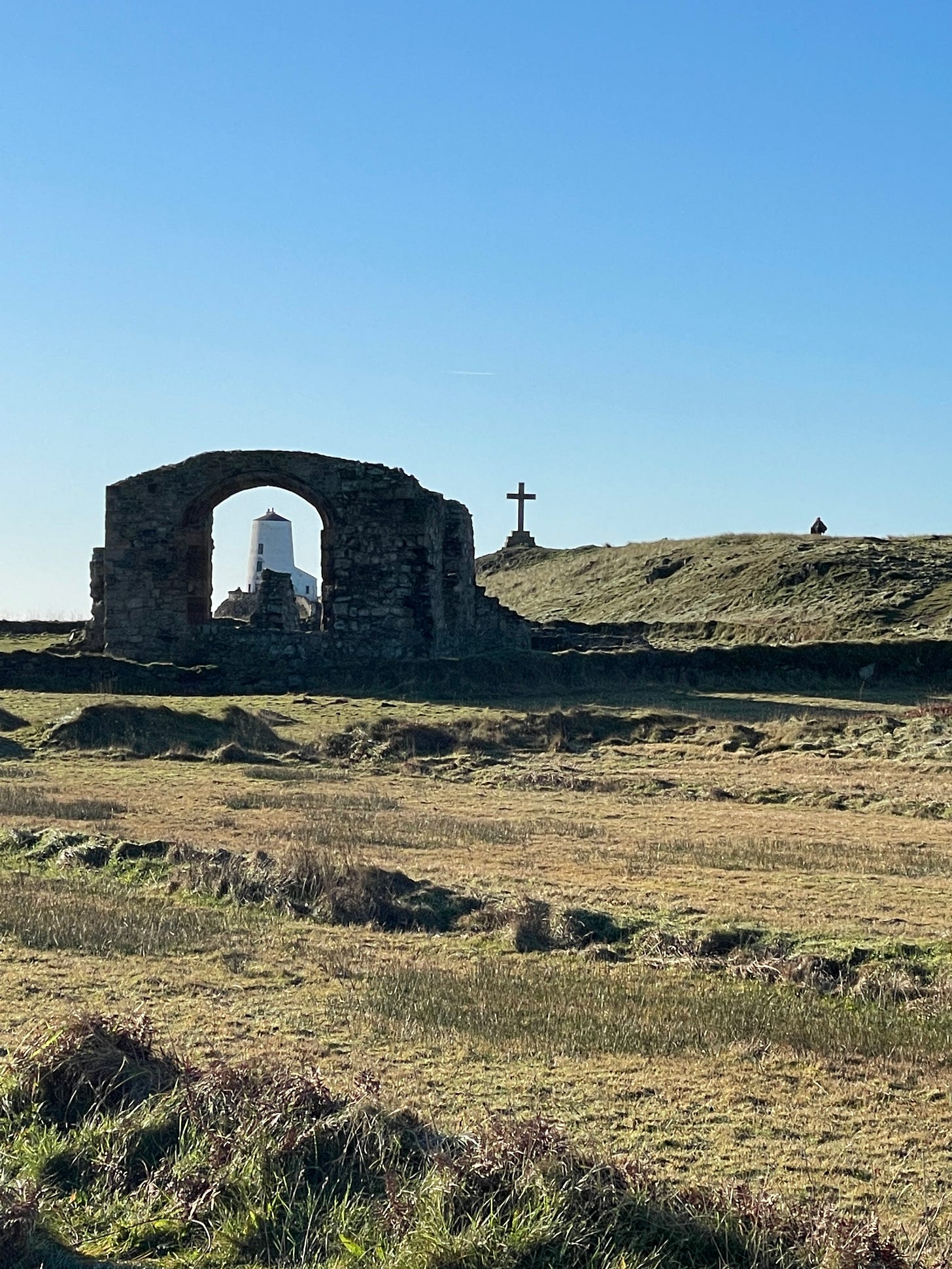Today we are celebrating Saint Dwynwen’s Day in Wales, but who was Dwynwen?
According to legend, Dwynwen was the prettiest of King Brychan Brycheiniog's daughters and fell in love with Maelon Dafodrill, the son of a neighbouring king. However, her father, King Brychan, had already arranged for her to marry another prince.
Dwynwen was distraught and fled to the woods to weep. She begged for God to help her and was visited by an angel who gave her a potion that would help her forget Maelon. The potion however did not work and Maelon was turned into a block of ice instead. Granted three wishes by God, Dwynwen asks for Maelon to be thawed - for God to look after all true lovers and that she remains unmarried.
Giving thanks to God, Dwynwen went to live in solitude on the small tidal island of Ynys Llanddwyn - Anglesey, off the west coast of Wales for the rest of her life. She build a small church and studied the healing power of local plants, helping many people from all over Wales heal their ailments.
During the middle ages, Saint Dwynwen’s church became an important shrine with people travelling to the well believing that the movement of fish within its waters indicated lovers’ destinies. However, after the reformation devotions to the shrine were suppressed with the site falling into disrepair and it was not until the 19th century and the rediscovery of traditional devotions by the Anglican Church, that Saint Dwynwen got the recognition she deserved and a plain cross was erected in her memory. This was replaced by a Celtic Stone Cross near the ruins of her church in 1903.
Dydd Santes Dwynwen - Welsh for Saint Dwynwen’s Day is considered to be the Welsh equivalent to Valentine’s Day. It is celebrated on the 25th January and is becoming more popular in Wales every year, with special events, such as concerts being held and the exchange of Dydd Santes Dwynwen cards between loved ones.
Dwynwen’s legacy lives on in poems written by Welsh poets Dafydd ap Gwilym and Dafydd Trefor, and the song ‘Dwynwen’ written by Benjamin Williams with music by Joseph Parry for the 1896 National Eisteddfod.
Llanddwyn Island is one of the most beautiful and romantic spots in Wales and worth a visit any time of year. On the southwest corner of Anglesey and near the village of Newborough, it is backed by dunes and forests and the most beautiful sandy beaches. On the headland you find two lighthouses, the picturesque ruins of Saint Dwynwen’s Church, where she is said to be buried, as well as several wells and springs, the most important being Dwynwen’s well - the well for lovers.
Happy Saint Dwynwen’s Day!
Heike x








